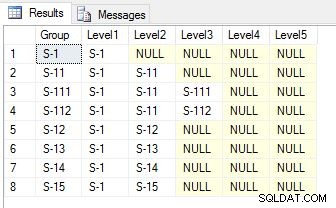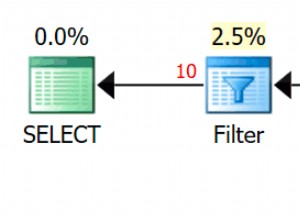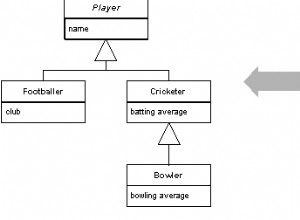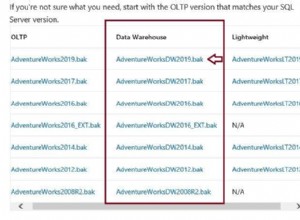Jeśli masz ustaloną lub ograniczoną liczbę poziomów, możesz nie potrzebować DYNAMIC SQL. „Przetwarzanie” ścieżka może być wykonana za pomocą małego kodu XML.
Rozważ następujące kwestie:
Przykład:
Declare @YourTable Table ([Parent] varchar(50),[Child] varchar(50))
Insert Into @YourTable Values
(null ,'S-1')
,('S-1','S-11')
,('S-1','S-12')
,('S-1','S-13')
,('S-1','S-14')
,('S-1','S-15')
,('S-11','S-111')
,('S-11','S-112')
;with cteP as (
Select Child
,Parent
,PathID = cast(Child as varchar(500))
From @YourTable
Where Parent is Null
Union All
Select Child = r.Child
,Parent = r.Parent
,PathID = cast(p.PathID+','+cast(r.Child as varchar(25)) as varchar(500))
From @YourTable r
Join cteP p on r.Parent = p.Child)
Select [Group] = Child
,B.*
From cteP A
Cross Apply (
Select Level1 = xDim.value('/x[1]','varchar(max)')
,Level2 = xDim.value('/x[2]','varchar(max)')
,Level3 = xDim.value('/x[3]','varchar(max)')
,Level4 = xDim.value('/x[4]','varchar(max)')
,Level5 = xDim.value('/x[5]','varchar(max)')
From (Select Cast('<x>' + replace(PathID,',','</x><x>')+'</x>' as xml) as xDim) as X
) B
Order By PathID
Zwroty





